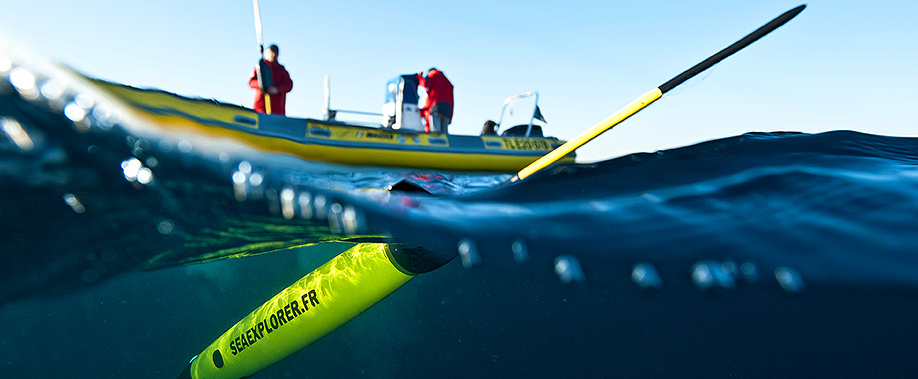Robots & sensors

Two types are distinguished: gliders http://www.oao.obs-vlfr.fr/robots-a-sensorssm/gliderssm and profiling floats http://www.oao.obs-vlfr.fr/robots-a-sensorssm/profiling-floatssm. By changing their buoyancy, thanks to the displacement of a certain volume of oil between the inner and outer part of the “vessel”, they travel within the water column describing a “yo-yo” trajectory.
Profiling floats move between the sea surface and 2000 meters depth and drift with the currents. While their trajectory cannot be modified, gliders can be piloted. Gliders operate with the same principle of buoyancy change except that, thanks to wings, their vertical displacement is transformed into a horizontal one. They dive down to 1000 meters of water depth. Once back at the sea surface both types of robots interact with a land-based operator through iridium telemetry allowing e.g. data transfer or changes in mission parameters.
Equipped with miniaturized sensors (scientific payloads) these undersea robots acquire oceanographic observations while crossing or drifting across the Oceans. Previously, only physical properties (temperature and salinity) could be measured, but recent technological advancements now allow the implementation of further sensors. These biological, chemical and optical sensors can measure additional properties like: spectral irradiance, concentration in chlorophyll-a, oxygen, nitrates, particles and colored dissolved substances.
Thanks to the combination “undersea robot plus sensors” new observational strategies can be envisaged, relying on the new capabilities offered by this combination:
> real-time data http://www.obs-vlfr.fr/OAO/CARTO/index.html acquisition and transmission
> high-resolution and quasi continuous measurements
> access to observations in remote oceanic regions (e.g. South Pacific Ocean)
Such new observational tools and strategies are particularly required for biogeochemical studies. Our present observational capabilities of biological and chemical budgets and fluxes in the Ocean are indeed mostly based on sampling performed from research vessels. As a consequence, (1) the Ocean is chronically undersampled and (2) we can hardly study biogeochemical processes at specific observational scales (e.g. sub-mesocale: 1-10km; diel to interannual scale).
Although the mission characteristics of the two types of underwater robots are different, their scientific objectives and applications are highly complementary :
> gliders: support coastal operational oceanography/ monitoring/ cartography of marine environmental concerns (e.g. oil pollution, harmful algae blooms, jellyfish)/scales: local and from sub-diurnal to weeks.
> profiling floats: support open Ocean operational oceanography/exploration and observation/scales: regional-global and from sub-seasonal to interannua.
